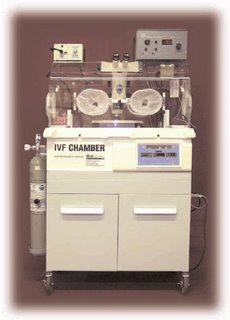WOMEN having fertility treatment may soon have just one embryo implanted, in an attempt to reduce costly twin births.IVF: Women facing new NHS limits of one embryo, Scotsman, 18 settembre 2006.
Couples having IVF are currently limited to two embryos being transferred at a time in women aged under 40, or three for older patients.
But the Human Fertilisation and Embryology Authority (HFEA) is to launch a consultation on transferring a single embryo per cycle of treatment. The authority will receive a report, chaired by Professor Peter Braude, next month before debating the issue.
The report is expected to highlight the costs and complications to both mother and baby associated with twin births.
But patient groups said that if twin births were to be prevented, more funding needed to be made available so that women could have more NHS cycles of IVF.
The number of twins born has doubled since IVF began in the late 1970s. About one in four sets of twins in the UK is now the result of fertility treatment.
Professor Siladitya Bhattacharya, a fertility expert at Aberdeen University, said that some clinics in Scotland were already using just single-embryo transfers in patients.
He said that in many young women who were “twin prone”, transferring just one embryo did not reduce the success rate.
“We do need to reduce twin births, not just because of the risks to the babies but also to the mothers having Caesareans. Twins are five times more likely to suffer cerebral palsy and 50 per cent are born prematurely. There are also the implications for NHS resources.”
Dr Bhattacharya said a shortage of special-care beds for these babies could mean that one was cared for in Aberdeen while the other was sent to Newcastle.
John Paul Maytum, from the HFEA, said it was waiting to see the full report from the expert group before making any decisions on how it could reduce multiple births.
But he said the issue needed to be dealt with due to the high risk of complications and the “small fortune” twin births were costing the NHS.
“We need to come up with something that is workable,” Mr Maytum said.
“There is a lot of anxiety among patients about this, with the belief that if you have just one embryo, there is less chance of success and you will have to go through it again.”
Sheena Young, of Infertility Network UK in Scotland, agreed that, in future, twin births did need to be reduced. She said, however, this would mean it was even more important that funding was put into the NHS provision of IVF.
“The money needs to be there so that couples can have three cycles on the NHS for their best chance of success,” she said. “If that is not there, they will not support single-embryo transfers.”
She said that while NHS funding of IVF was better in Scotland than the rest of the UK, there were still regional variations.
In Grampian, for example, there is a waiting list of four-and-a-half years for treatment. And while Lanarkshire patients can have three NHS cycles, in Glasgow they are limited to two.
Così invece la legge 40: Articolo 14, 2: Le tecniche di produzione degli embrioni, tenuto conto dell’evoluzione tecnico-scientifica e di quanto previsto dall’articolo 7, comma 3, non devono creare un numero di embrioni superiore a quello strettamente necessario ad un unico e contemporaneo impianto, comunque non superiore a tre.
Senza distinzione di età o di corporatura. Come il 6 politico...



























1 commento:
Ciao Chiara, ben ritrovata...
Il bello è che questo avvertimento, che già girava da qualche tempo... è stato ripetutamente sfruttato dai critici della PMA e dai paladini della sacralità dell'embrione, per dimostrare che è giusto produrne uno solo alla volta!
Il fatto che gli stessi ricercatori che hanno sollevato il problema hanno proposto come alternativa ovvia il congelamento e il reupero successivo, è stata accuratamente rimossa. :(((((
saluti
Lisa
Posta un commento